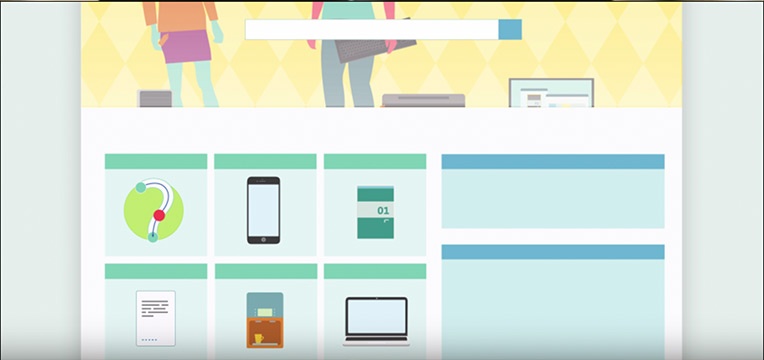Making the most of self service will save you work in the long run, but also requires a bit of work to get going. To get the most out of it, you need to design a good self service portal for your audience - and not for yourself. Keep these few things in mind.
One of my recent consultancy projects involved a self service portal redesign where we managed to bring the self service rate from 4% up to 68%. Those are of course some incredible stats, and not every self service portal implementation will achieve that. But you can get close with a good implementation strategy.
1. Make sure all involved parties are aligned
Before setting up your self service portal (as in any project that involves several stakeholders), it’s important to make sure everyone’s on the same page. This doesn’t just mean getting the go-ahead from management, but checking that you’re also aligned within your department.
It’s important that you don’t only assume you all know what you want out of the portal, but that you make sure that you all agree what the goal is. Hold a meeting and address this seriously. This alignment becomes especially important if you are working together with other departments such as Facilities, Estates or HR – i.e. setting up a shared service portal. You should definitely share a portal if both departments want one (it’s easier for your customers), but it does require a bit of extra collaboration.
2. Analyse your data
Once you’re aligned, the next crucial step in creating a self service portal is finding out what services you deliver to your end users. While this may seem difficult, a lot of information can already be found in your existing data.
For instance, look at the tickets that came in over the last couple of months and try to group these into services that you deliver. You can use this information to run some simple analysis on what the types and frequencies of calls are. This gives you a great starting point to building your portal.

3. Speak to your users
Even at an early stage of building your portal, it’s good to get some qualitative insight by engaging your end users.
This is almost always overlooked. A lot of departments will assume they understand their customers’ needs without really speaking to them. Remember that if there is something about the process that your users don't understand, your job isn't to educate them but to make the process easier by speaking their language.
Gather feedback in whatever way suits your business best. One way to get responses is of course the classic practice of sending a survey around. But don’t disregard the effect of talking to your users face to face, either in formal focus groups or even just in the corridor on your way to make a coffee. Read this post for some great tips on getting continuous customer feedback.
Remember that while it would be great if at this point your end users always found what they are looking for, don’t be discouraged if they find room for improvement. Optimising is the best way to continuously improve your portal. For example, if customers find requesting new workspace material quite complex, then help them by creating a simpler process for them to follow next time.
>> With these 4 tips you'll build user-friendly forms in the Self-Service Portal
4. Launching your self service portal
It can be tempting to think "Let's launch the portal and build it up as we go along". But this isn't really the correct mindset. Why? If you launch and promote your portal with just 5-10% of your service delivery covered, you run a high risk that your users won't find what they are looking for. Not a great first impression.
But equally - don't hold on to the portal just trying to perfect it. Additional improvements will primarily come from feedback from the rest of the organisation after go-live. Launching a portal that is about 80% ready while keenly listening to your stats and customer feedback is good practice.
Read how to successfully promote your self service portal »
5. Optimise
If 6 months after go-live, your portal still contains almost the exact same information, something hasn’t gone right. The services you deliver are continuously changing. Continue to listen to your users’ feedback and optimise their experience. The better the experience, the easier life is for both your team and your end user is.
Making sure that your portal fulfils its purpose gives people a reason to come back to it, and makes it an integral part of your Service Delivery.
>> Learn how to successfully implement digital self service
Develop better self service practices
For more information on Service Catalogues, check out our e-bundle on developing better self service in your organisation.



Submit a Comment